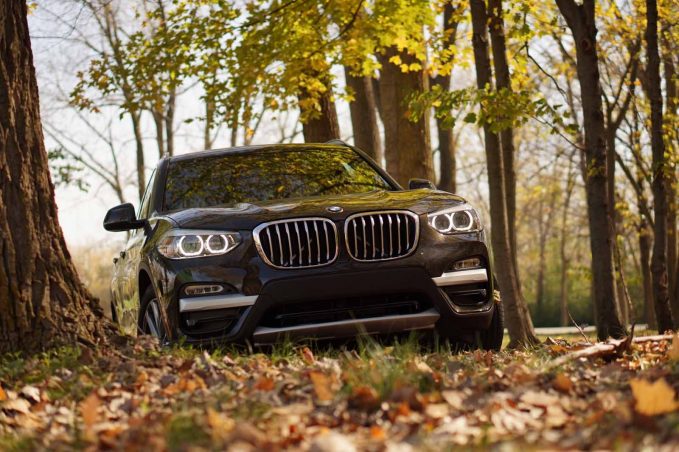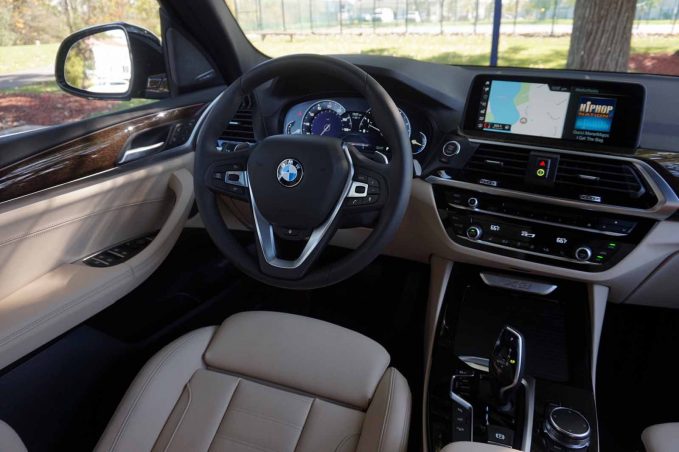It seems like BMW can just print money, and if you put a BMW logo on anything, people would certainly be willing to buy it, especially if it’s a crossover. That’s the benefit of being one of the most highly regarded luxury brands in the world. Because of this, the 2018 BMW X3 is destined to be a hit.
I’m not really one to believe in destiny, however. With some serious dedication and innovation, the X3 could have overcome its destiny to be more than just a hit and instead become the best vehicle in its class, a title that the crossover, unfortunately, can’t claim. The new X3 (especially in base form) manages to be quite average, not standing out in any one regard. Still, the X3 is better than it used to be. The luxury SUV was totally redone for the 2018 model year, gaining a more refined yet rugged style and updates all around.
The Drive
The hallmark of any BMW is that it should be a driver’s car with great, balanced handling and engaging steering. Luckily, the X3 checks those boxes pretty confidently — the steering has a good weight, and is responsive and precise, while the chassis is clearly well engineered and makes the X3 feel very composed and balanced. The crossover feels happy diving into corners and confident scooting around, just like a BMW should.
ALSO SEE: 2018 Audi S3 vs BMW M240i Comparison
The caveat is that the X3 tested was optioned with the Variable Sport Steering and a Dynamic Handling package, two not-cheap features that should be baked into all BMWs right from the get-go. People are already paying a premium for a BMW because it presumably is the “Ultimate Driving Machine” and yet the German automaker wants people to pay even more for something that no BMW should be without. That’s like paying to see a movie but being forced to pay extra to see the ending. If you didn’t pony up, you’d still be entertained for the hour and a half, but you’d leave the theater with an uneasy feeling that you’re missing out on something you were entitled to get.
The X3 xDrive30i we tested is powered by a smooth 2.0-liter turbo four-cylinder that outputs 248 horsepower and 258 pound-feet of torque. Acceleration is strong off the line, but loses steam quicker than it should and can’t really manage a highway passing maneuver as effortlessly as I expect a BMW should. When you put your foot down at any speed, there’s also a bit of turbo lag but the eight-speed transmission is pretty snappy and works quickly. The X3 M4oi with its turbo inline six with 355 hp and 369 lb-ft is probably the better choice for those seeking performance.
One thing most people will appreciate is that a surround-view reverse camera makes the crossover very easy to park, but even that is an add-on feature that’s not cheap.
Interior
BMW did a pretty good job in making the X3 easier to live with on a day-to-day basis and it’s quiet and comfortable inside. The infotainment system has been updated to be more user-friendly with a simplified menu structure that’s more intuitive to navigate. The system can be controlled by a new touchscreen (finally!) or the rotary dial. The optional head-up display is also much appreciated and keeps relevant information in plain sight. The optional lane-keep assist rumbles the steering wheel when you creep out of your lane and works well because it’s not jarring like other systems yet is still effective in getting a response from the driver.
The rest of the interior is well built with nice materials but still looks much less inviting when compared to offerings from Mercedes-Benz and Audi. The dashboard would benefit from being more user-friendly, as the buttons are too small, meaning you often have to take your eyes off the road to use them. It’s also disappointing that there’s no adaptive cruise control as standard in the X3 — even a Toyota Corolla comes standard with this tech now. There is 28.7 cubic feet (550 L) of cargo room in the back and 62.7 cu-ft (1,600 L) with the split 40/20/40 rear seats folded flat.
The Verdict: 2018 BMW X3 Review
The new X3 in base form doesn’t go above and beyond what people are right to expect from a vehicle like this and a brand like BMW. All the best parts of the example I drove were optional, so a base model of this car doesn’t end up being very compelling. As tested and loaded up with all the goodies, the X3 was average, maybe even good, but not outstanding.
The X3 competes in a tough segment where being average might be enough to get by, but luckily for BMW, its above-average reputation and its customers’ willingness to pay a lot for optional extras means that the X3 could be a lot worse, and BMW would still sell boatloads of them.










